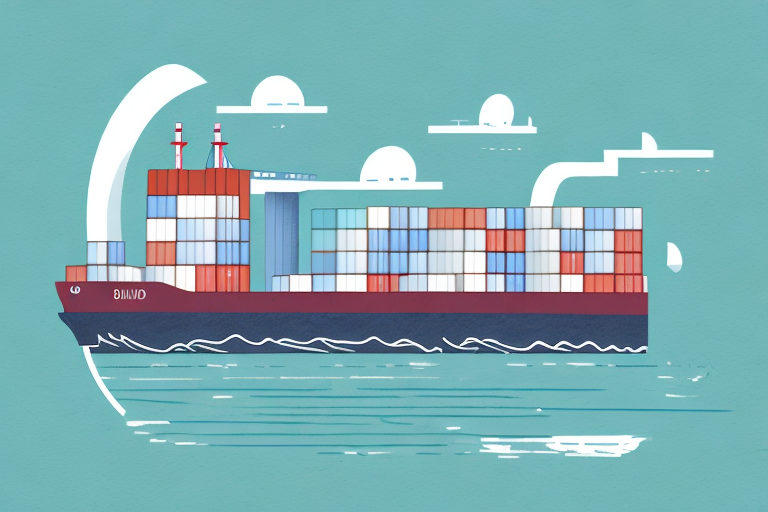What Is Landed Cost? An Overview of This Important Business Concept
Landed cost is a fundamental concept in modern business, crucial for accurately determining the total expense of acquiring a product from an overseas supplier. In simple terms, the landed cost of a product encompasses all expenses associated with getting it delivered to your warehouse or store, ensuring that businesses have a clear understanding of their true costs.
Understanding the Basics of Landed Cost
Landed costs can vary depending on the product and supplier location, often including:
- Product cost
- Transportation charges
- Insurance
- Customs duties and taxes
- Handling fees
For example, importing electronics from China involves elements like production costs, freight charges, inland transportation expenses such as trucking, insurance, customs duties, import fees, and any additional handling fees imposed by the supplier. According to a Trade.gov report, overlooking these costs can lead to incorrect pricing and significant confusion down the line.
It's important to note that landed cost isn't limited to imports. Domestic purchases also incur additional costs, such as storage and handling fees, which can quickly add up and impact overall profitability.
Managing landed costs effectively involves collaborating closely with suppliers and logistics partners to negotiate better rates and streamline processes. Additionally, investing in technology that can track and manage these costs is beneficial in the long run.
Why Landed Cost Matters for Your Business
Landed cost is invaluable for businesses importing goods as it provides an accurate cost for inventory and a clear understanding of the total cost of ownership. This clarity helps in calculating necessary profit margins and pricing products accurately.
Understanding landed cost assists in making informed supply chain decisions. By evaluating different suppliers and shipping methods based on their landed costs, businesses can identify the most cost-effective options, leading to substantial savings and improved profit margins. A study by Investopedia highlights that accurate landed cost calculations can enhance pricing strategies and competitiveness in the market.
Moreover, calculating landed cost enables businesses to identify inefficiencies within their processes. Consistently high fees or taxes can be renegotiated or optimized, allowing for streamlined operations and increased profitability through data-driven decision-making.
Calculating Landed Cost: A Step-by-Step Guide
Calculating the landed cost involves several steps to ensure accuracy:
- Determine Product Value and Terms of Sale: Understand the product's cost and the sales terms with the supplier.
- Add Transportation Costs: Include freight charges via sea, air, or land transportation.
- Include Insurance: Factor in insurance costs to protect against potential losses during transit.
- Calculate Customs Duties and Taxes: Research applicable import duties and taxes based on the destination country.
- Add Handling Fees: Include any additional fees related to packaging, storage, or local delivery.
Using a landed cost calculator can automate this process, enhancing accuracy and efficiency. Tools like ShipBob's landed cost calculator provide businesses with precise calculations by integrating real-time data.
The landed cost varies based on the country of origin and the destination. For instance, importing from countries with high customs duties will result in a higher landed cost compared to those with lower duties. Similarly, exporting to countries with high taxes increases the overall cost.
Transportation mode significantly impacts landed cost. While shipping by sea is cheaper, it takes longer, which might not be suitable for products with a short shelf life. Conversely, air freight, though costlier, ensures timely delivery for perishable goods. Businesses must weigh these factors when determining the most efficient transportation method.
Different Types of Costs Included in Landed Cost
Landed cost encompasses various expenses beyond just shipping charges. Key components include:
- Freight Charges: Costs associated with transporting goods from the supplier to the destination.
- Inland Transportation: Expenses related to moving goods within the destination country.
- Customs Fees and Import Duties: Taxes and duties imposed by the government on imported goods.
- Taxes and Tariffs: Additional governmental charges that vary based on product type and country.
- Handling Fees and Local Delivery Charges: Costs for packaging, storage, and final delivery to the warehouse or store.
Understanding each component is crucial for accurate cost calculation and maintaining profitability.
Common Challenges with Landed Cost Calculation and How to Overcome Them
Calculating landed cost accurately can present several challenges, including:
- Incorrect Pricing: Miscalculations can lead to pricing products below cost, resulting in losses.
- Hidden Costs: Unexpected fees or taxes that are not initially accounted for.
- Supply Chain Interruptions: Disruptions can increase costs unexpectedly.
To mitigate these challenges, businesses should ensure accurate documentation, work with reliable suppliers, and maintain clear communication throughout the supply chain. Utilizing technology for real-time tracking can also help manage these variables effectively.
Customs regulations and tariffs are complex and vary by country. Partnering with experienced customs brokers or freight forwarders can simplify compliance and reduce the risk of costly errors. Staying informed about regulatory changes through sources like U.S. Customs and Border Protection ensures businesses remain compliant and can adjust strategies as needed.
Landed Cost vs. Total Cost: What's the Difference?
While both landed cost and total cost are essential for pricing and profitability, they serve different purposes:
- Landed Cost: Includes the price of the product, duties, shipping, insurance, and other costs incurred in acquiring the product.
- Total Cost: Encompasses the landed cost plus all other expenses involved in production, distribution, overhead, labor, and marketing.
Understanding the distinction is vital for importers to make informed pricing decisions. While landed cost determines the immediate expense of acquiring goods, total cost provides a comprehensive view of all expenses related to bringing a product to market. Combining both insights allows businesses to set prices that cover all costs and ensure profitability.
The Impact of Landed Cost on Pricing and Profit Margins
Landed cost directly influences pricing strategies and profit margins. If businesses fail to account for landed costs, they risk selling products below their actual cost, leading to losses. On the other hand, accurately incorporating landed costs ensures that pricing reflects true expenses, safeguarding profit margins.
Additionally, variations in landed costs based on country of origin and transportation mode impact profitability. For instance, high customs duties or expedited shipping can increase costs significantly. A Forbes article emphasizes the importance of factoring these variables into pricing strategies to maintain competitiveness and profitability.
Tips for Reducing Landed Costs and Improving Your Bottom Line
Businesses can adopt several strategies to reduce landed costs, including:
- Optimizing Shipping Routes: Identifying the most efficient and cost-effective routes to minimize freight charges.
- Consolidating Shipments: Combining smaller shipments into larger ones to take advantage of bulk shipping rates.
- Streamlining Customs Processes: Simplifying customs clearance to reduce delays and associated fees.
- Negotiating with Suppliers: Securing better prices or favorable terms to lower product costs.
Leveraging free trade agreements can also significantly reduce tariffs and taxes. Businesses should research applicable free trade agreements to take advantage of reduced or eliminated tariffs on specific goods.
Staying informed about regulatory and tariff changes is crucial. Regularly consulting resources like Trade.gov ensures businesses can adapt swiftly to legislative changes, avoiding unexpected costs and maintaining cost efficiency.
Best Practices for Managing Landed Costs in a Global Supply Chain
Effective management of landed costs within a global supply chain requires adherence to best practices, such as:
- Standardizing Calculation Processes: Developing consistent methods for calculating landed costs to ensure accuracy across the board.
- Stakeholder Communication: Engaging suppliers, shippers, and customs officials to maintain transparency and coordination.
- Investing in Technology: Utilizing ERP software or landed cost calculators to automate and streamline calculations, reducing the risk of errors.
Regularly reviewing and updating landed cost processes is essential as market conditions and regulations evolve. Conducting periodic audits can identify areas for improvement and ensure compliance with current laws and standards. Embracing continuous improvement helps businesses stay ahead of potential challenges and maintain cost efficiency.
Examples of Industries that Benefit from Accurate Landed Cost Calculation
Accurate landed cost calculation is beneficial across various industries, including:
- Retail: For purchasing merchandise and products from diverse suppliers.
- Software and Technology: For acquiring hardware components from global manufacturers.
- Pharmaceutical: For importing medical equipment and drugs from international suppliers.
- Automotive: For sourcing parts and materials from different countries.
- Apparel: For importing fabrics and garments from overseas manufacturers.
Each of these industries relies on precise landed cost calculations to manage expenses and maintain competitive pricing in their respective markets.
Future Trends in Landed Cost Management and Technology Solutions
The landscape of landed cost management is evolving with advancements in technology. Emerging trends include:
- Artificial Intelligence (AI): AI-driven tools can enhance the accuracy of landed cost calculations by analyzing vast datasets and predicting cost fluctuations.
- Blockchain: Blockchain technology offers increased transparency and security in supply chain transactions, reducing errors and fraud.
- API Integrations: Seamless integration of landed cost calculators with existing business systems enables real-time data sharing and faster decision-making.
- Automated Compliance: Tools that automatically update with the latest customs regulations ensure businesses remain compliant without manual intervention.
According to a McKinsey report, the adoption of digital solutions is set to revolutionize international trade by reducing complexity and lowering costs, making landed cost management more efficient and reliable.
Conclusion
Landed cost is a critical concept for businesses involved in importing products. Accurate calculation and management of landed costs are essential for setting the right prices and maintaining healthy profit margins. By understanding the components of landed cost, implementing best practices, and leveraging technology, businesses can enhance their supply chain efficiency and achieve greater profitability.
Staying informed about market trends, regulatory changes, and technological advancements ensures that businesses remain competitive and can adapt to the dynamic landscape of global trade.






















